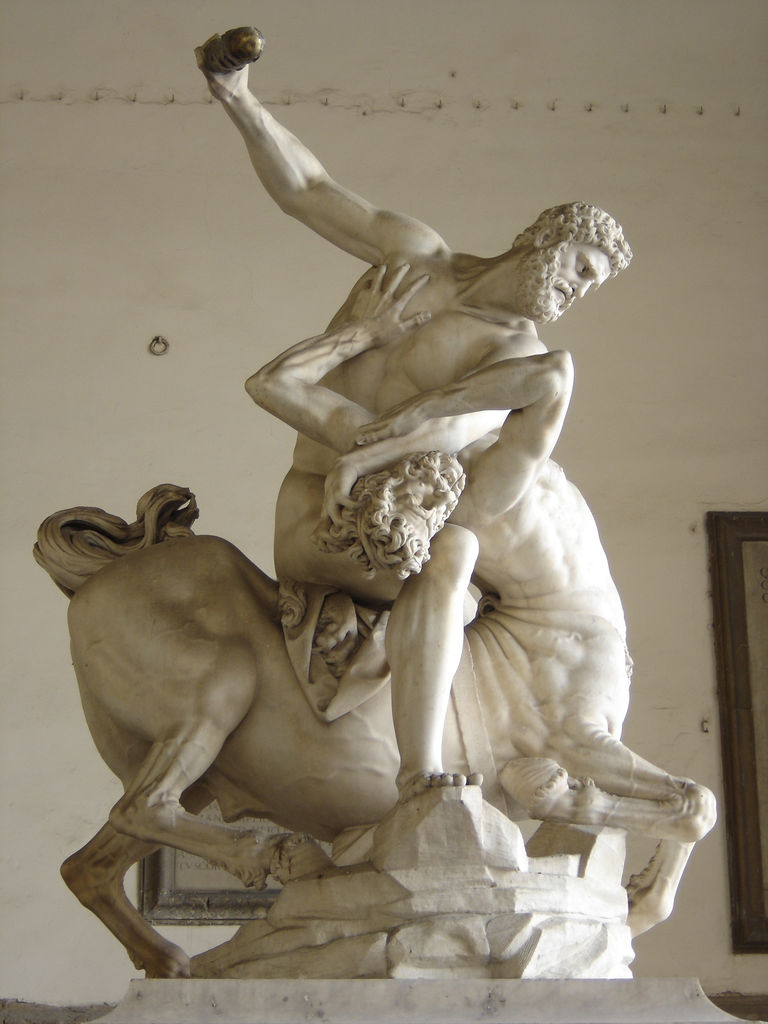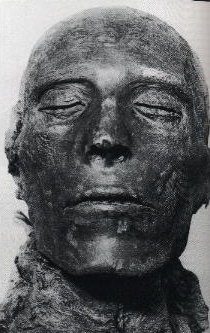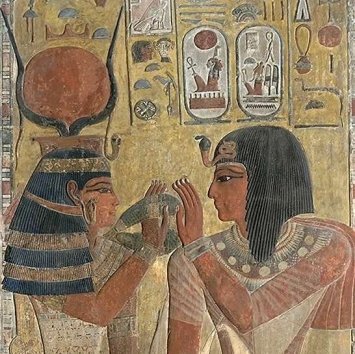Viking Ships! This ship was uncovered in Sandefjord, Norway. The 75-foot ship was found within a burial mound. It's suspected that the Elderly skeleton uncovered within the ship was that of Olaf Geirstad-Alf, Norwegian King, who ruled and conquered many lands. The Viking tradition of utilizing ships in their burial ceremonies seems so proper to me. These people spent a large part of their lives at sea, warring, trading, or simply travelling. To incorporate your life's work into you life's parting only seems natural, or fitting. It made me think about my own life, or the end of it rather. How could I make my own personal? I don't have a passion for sea life, so burial in a boat would be quite right. Perhaps I could be buried in my own means of transportation. I'm no King and my van isn't quite 75-feet long, but it's how I get from Point A to Point B. Transportation is how someone experiences new people and scenery. Without transportation, life is stationary and bland. People recognize my van, it's big, 70's style. It's accumulated various nicknames. Anyone who hangs out with me has ridden in it. I've driven it through the country, through the city, across bridges and borders. Transportation vehicles are vey meaningful, they're with you wherever you go. I definitely want to get buried in my huge G-20 Chevrolet Van.
Tuesday, November 27, 2012
Thursday, November 8, 2012
Yakshi
 Yakshi is a name for the Mauryan Spirit representing the productive forces of nature. The first Yakshi image here is the one I originally saw in the textbook. This statue was created in the 3rd century,
Yakshi is a name for the Mauryan Spirit representing the productive forces of nature. The first Yakshi image here is the one I originally saw in the textbook. This statue was created in the 3rd century,A Yakshi statue from the 11th or 12th century. Again, very light clothing.
A larger statue of the Yakshi can be found in the Malampuzha Garden. This statue is the Yakshi sitting on it's bottom, legs spread, with no clothes on.
All the images I find of the Yakshi are extremely exaggerated portrayals of the female figure. The majority of the figures seem organically unattainable, from my understanding of the female anatomy. I don't know what they were feeding women in the 3rd century, but without plastic surgery, I don't think they actually looked like this. This is an idealization. These figures look as if you cut and pasted different female figures together to, using the best parts of each, to get the "perfect body". A part of me is disgusted by these images because they are portraying something that's not real. People sexually interested in women may look at this at it makes their body image expectations of women to be ridiculous. While some women may look at this series of statues and wonder why they don't look this way, and may start to believe they're undesirable themselves. I have news for you, there is no such thing as a perfect body. You will never attain Yakshi status. No matter how much you work out, or diet. This figure is not attainable organically. The female figure is beautiful in plenty of different shapes, you can't generalize what an entire culture finds attractive. I think most women would be happier about their body image, if this Yakshi-Style body image didn't brainwash our minds since the 3rd century.
Tuesday, October 16, 2012
Hercules! Hercules!
Possibly one of my top ten Disney characters. I don't know about you, but that's how I learned the story of Hercules. This sculpture of Hercules is incredible in my opinion. The movement the
arms creates really brings this sculpture to life. The sculpture is
simply massive. You can tell there is struggle here. In all honesty,
this seems like a point of weakness for Hercules. Having the half-man on
his heels, the centaur begs for compassion. His hands pressed to
Hercules' chest, searching for his heart.
Then you see Hercules' face. He's not even looking at the Centaur. He's not focused. Perhaps he's having a moment of self-reflection. Asking himself, "Am I a man of compassion? Should I let this freakishly divine beast live it's life? Who am I to end a life" The direction of his face and eyes leads me to believe he's distracted by more complex conflicts. While the Centaur's legs and face were done beautifully, visual hierarchy tells you Hercules is the more important character. The curly hair looks as though it could have been done by drill work.
While he is quite buff in this depiction, in comparison to the Farnese
Hercules' Sculpture, he's modestly done. He's just the right amount of muscular. The Farnese sculpture is so accentuated, it makes you uncomfortable.
Then you see Hercules' face. He's not even looking at the Centaur. He's not focused. Perhaps he's having a moment of self-reflection. Asking himself, "Am I a man of compassion? Should I let this freakishly divine beast live it's life? Who am I to end a life" The direction of his face and eyes leads me to believe he's distracted by more complex conflicts. While the Centaur's legs and face were done beautifully, visual hierarchy tells you Hercules is the more important character. The curly hair looks as though it could have been done by drill work.
While he is quite buff in this depiction, in comparison to the Farnese
Hercules' Sculpture, he's modestly done. He's just the right amount of muscular. The Farnese sculpture is so accentuated, it makes you uncomfortable.
Monday, September 24, 2012
Sety I's KV17
Last week, we learned of Ramses II. Ramses II was a notoriously malicious, self-serving entity. Ramses was extravagant in memorial pieces to himself. He would use slaves to build these gargantuan structures. So there is an old phrase, "the apple doesn't fall far from the tree." I decided to look up Ramses II's lineage. Sety I's mummy is shown below. He's quite creepy looking in my opinion. I know the average life span was short back then, but I was expecting a wrinkly face. He looks like stone. He has a strong facial structure, his long face seems powerful. I think Ramses II might have been trying to proclaim how important he was to one up his strong-faced father.
This is Ramses II's father, Sety I.
Sety I's tomb is located in The Valley of The Kings,where the kingdom's Pharaohs and Nobles were buried. Sety I's tomb is particularly intriguing because it's debated to be the most well preserved in all of the Valley. The tomb is filled with high grade relief sculptures and paintings. Perhaps the tomb is so well preserved because it delves into the depths of the Earth. You can view the tombs structure below. I've never understood the excessive burial customs of past cultures. Did he really have to go that deep into the ground? I don't even like basements. I think anybody who wants to be that deep in the ground probably never liked people for the most part. He's making his burial spot such an inconvenience to visit. Perhaps he said something along these lines, "I don't like seeing you people in my current life! Why in the hell would I want to see you in my afterlife???"
This map will give you a general idea of KV17's layout.
"KV17 is an odd name for a burial site," you say? Yes, at first it sounds like the name of a hip night club you'd find in a big city. But it's actually a series of burial sites named similarly. KV is representative of 'The Valley of Kings' and the number following is an identification to which individual. KV17 is known by many names, including "The Tomb of Apis." KV17's architecture constitutes seven corridors & ten chambers. Through studies, experts concluded that a majority of the tomb was built prior to Sety I's mummification. But a large part of the tomb's decoration was done post-mortem, by his son, Ramses II. You must take this information into account when viewing this tomb. You are not seeing Sety I through his own vision and guidance. You are seeing Sety I painted and sculpted the way his son saw fit. A level of respect is shown to his father, by how complete the tomb was decorated. I treat this as a lesson. Treat your children right and teach them good and you'll live forever. They say you have two deaths. The first is when your body dies. The second death is the last ttime someone speaks about you. If you live right and treat your children right, your second life is bound to be lengthy.
Above is an example of the relief sculpture found in KV17. It's hard to have aesthetic favoritism when viewing Egyptian human figures because they all look the same! It's as though they got this same one guy to do every Pharaoh's portrait! Because of this I tend to focus on adornments, whether clothing or jewelry. In this particular example, Sety I is wearing a crown of some sort that features a snake. Sety I also seems to be wearing a shawl or silk drape. From this depiction Sety I looks stylish and bad ass. I wish I could wear a snake on my head! Sety I looks like a rockstar getting love from a groupie. To use common terms, this photo would be posted Sety I's facebook wall with a caption, "The afterlife is going to rock, High-Five!" or "Long Hair, Don't Care. Vote Sety I 1276 BC" From what I can tell Sety I was a good father and hip ruler.
Code of Hammurabi
The Code of Hammurabi
This 7 foot diorite slab should stir the souls of the Criminal Justice majors out there. This is the most ancient code of written law. Let's put this into context. Hammurabi is the sixth King of the first Babylonian Dynasty. Hammurabi wins many wars and conquers many lands. He rules a hefty portion of the Mesopotamia. How can he elevate himself to the next level of greatness? How does he become legendary? To become more memorable that the previous century's array of Kings, Hammurabi has to do something that's never been done before. Something revolutionary. Hammurabi recognized that his area of ruling had various laws in various areas. How can he rule a land when he, himself doesn't know the local customs. He rectifies this situation with the The Code of Hammurabi.
A translated quote from the chiseled cuneiform, " to cause justice to prevail in the land and to destroy the wicked and the evil that the strong might not oppress the weak nor the weak the strong." I found this translation to be intriguing. How do you define weak and strong? Is it a physical measurement? Is a weak person someone of low-education? "Power in Numbers," comes to mind if you define a weak person simply by their demographic. As you delve into Hammurabi's Code, you get a gist of social norms if you study the punishments. Wealth, class, and gender played a huge role in your judicial fate. The "Eye for an Eye" train of thinking saturated Hammurabi's cuneiform law. I don't believe laws should have any relation to wealth,class, or gender. However, discriminatory laws probably constitute a more civilized social environment than no laws at all. This was not a revolution, this is the primary document, the evolution of Common Law.
& I just remembered we're not allowed to use pieces from the book. Awesome.
Subscribe to:
Comments (Atom)








